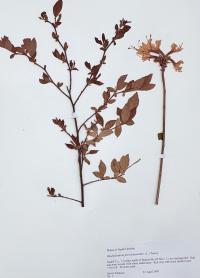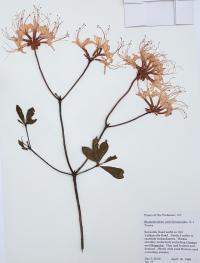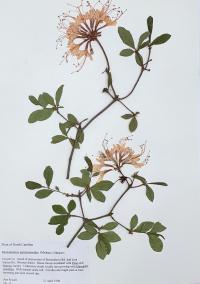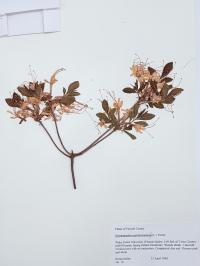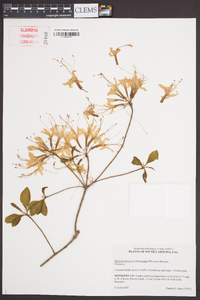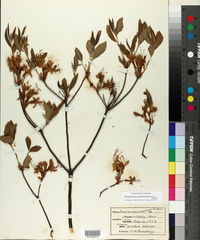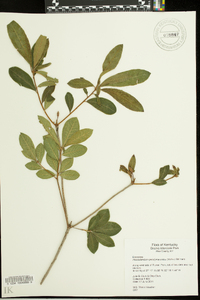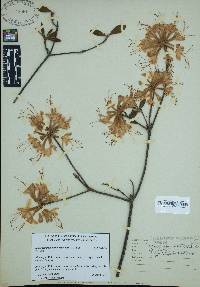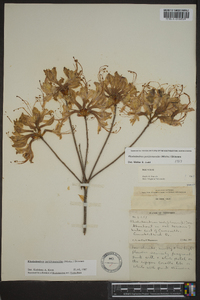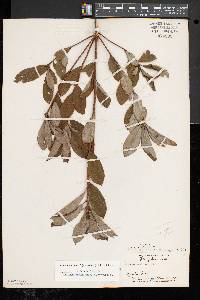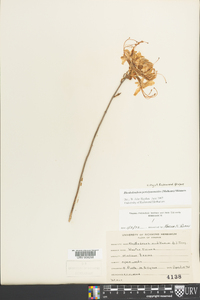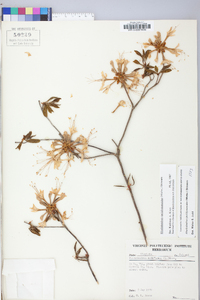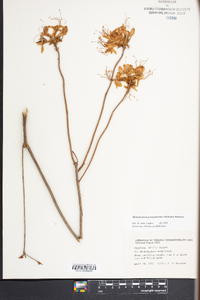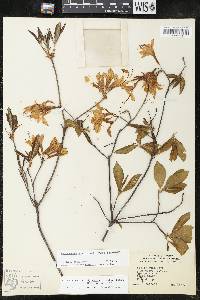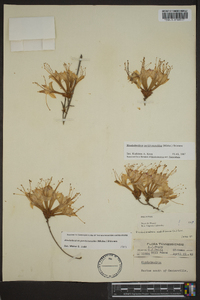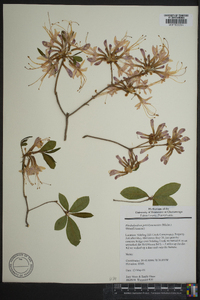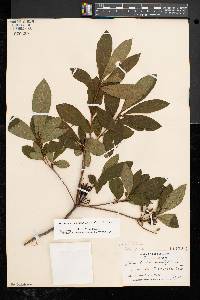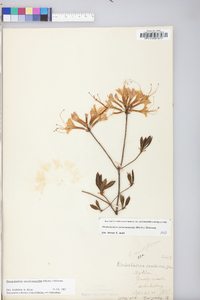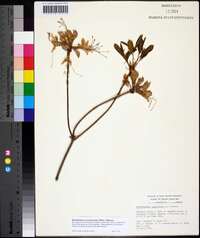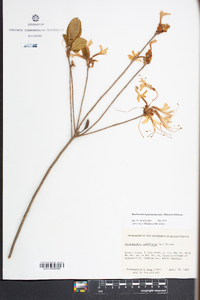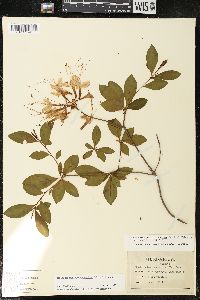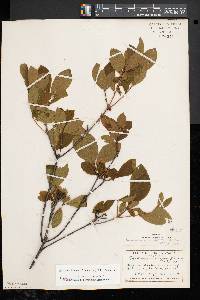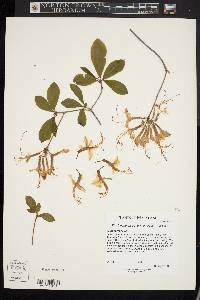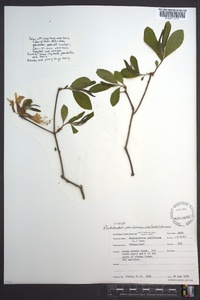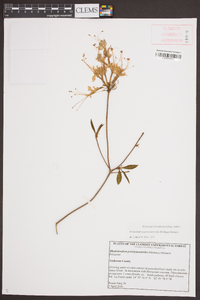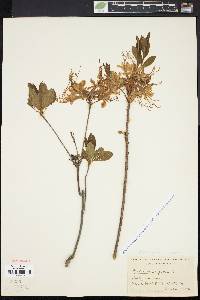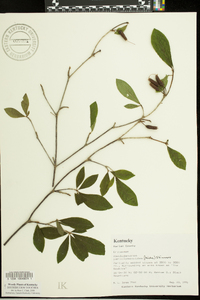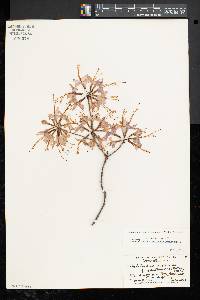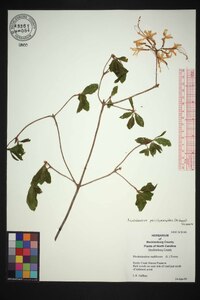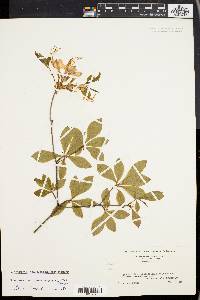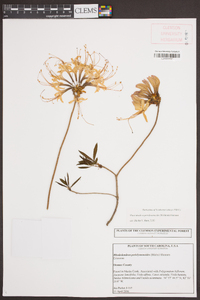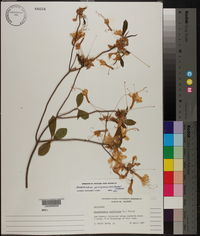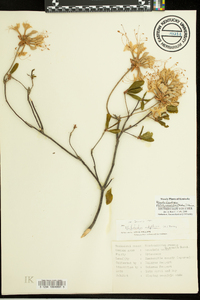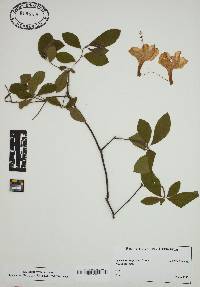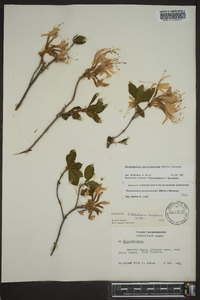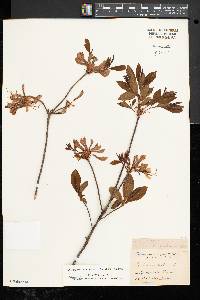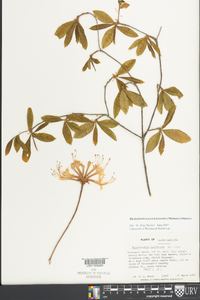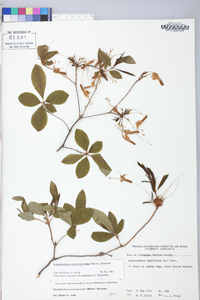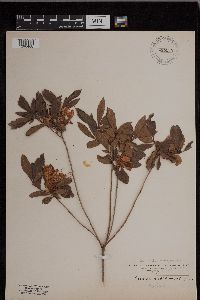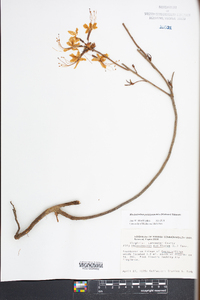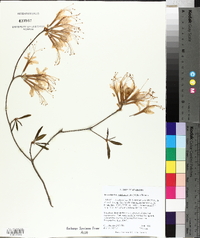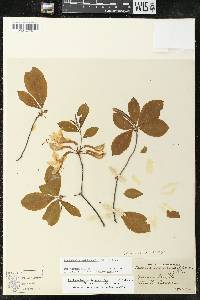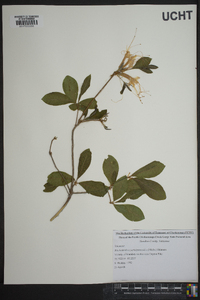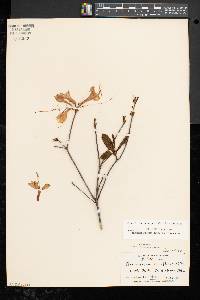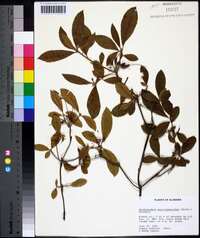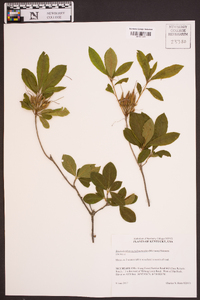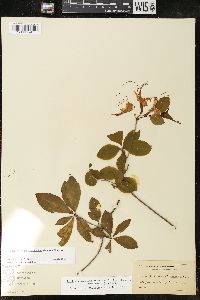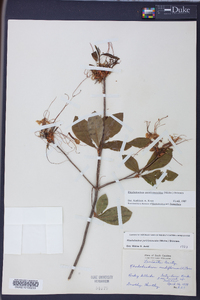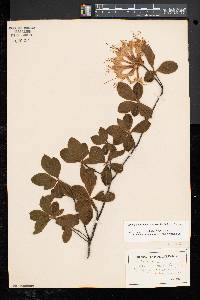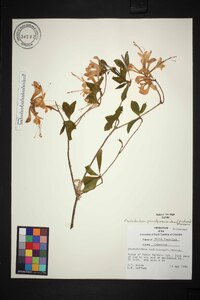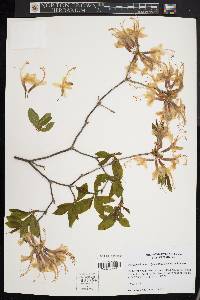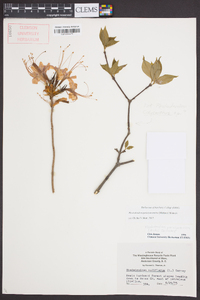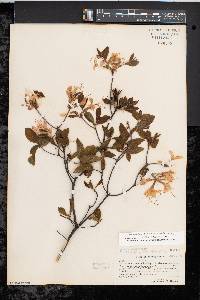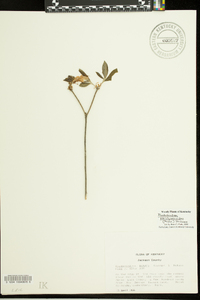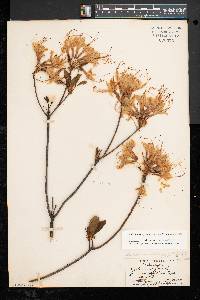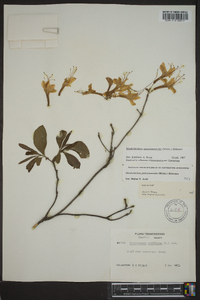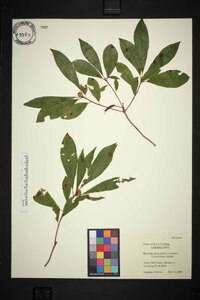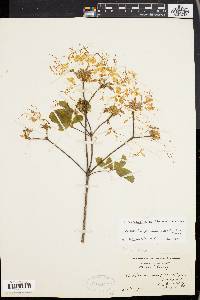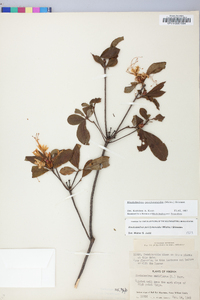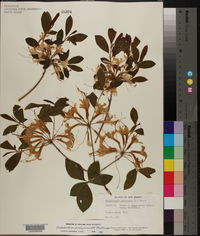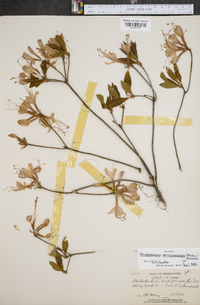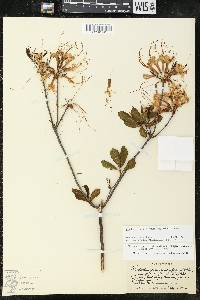Rhododendron periclymenoides
|
Rhododendron periclymenoides (Michx.) Shinners
 (redirected from: Azalea periclymenoides var. carnea Pursh) (redirected from: Azalea periclymenoides var. carnea Pursh) |
|
|
Family: Ericaceae
Pink Azalea
[Azalea periclymenoides Michx., moreAzalea periclymenoides var. alba Pursh, Azalea periclymenoides var. carnea Pursh, Rhododendron periclymenoides f. album (Ait.) C.F. Reed, Rhododendron periclymenoides f. eglandulosum F. Seym.] |
Shrubs, to 3(-5) m, usually not rhizomatous. Stems: bark smooth to vertically furrowed, shredding; twigs scattered, multicellular eglandular-hairy (hairs unbranched) or such hairs ± absent, otherwise glabrous or sparsely unicellular-hairy. Leaves deciduous; petiole multicellular eglandular-hairy and unicellular-hairy; blade ovate to obovate, 3-9(-12.5) × 1.4-3.8(-5) cm, thin, membranous, margins entire, plane, ciliate, eglandular-hairy, often strikingly so, apex acute to obtuse, often mucronate, abaxial surface often glabrous or, sometimes, sparsely unicellular-hairy, sometimes sparsely eglandular-hairy, adaxial surface sometimes scattered eglandular-hairy, otherwise glabrous or, sometimes, sparsely unicellular-hairy. Floral bud scales usually glabrous abaxially, margins unicellular-ciliate. Inflorescences 6-15-flowered; bracts similar to bud scales. Pedicels 4-19 mm, eglandular-hairy, otherwise glabrous or sparsely unicellular-hairy. Flowers opening before or with leaves, erect to horizontal, slightly fragrant; calyx lobes 0.5-2.5(-4) mm, surfaces and margins scattered, eglandular- and/or, rarely, stipitate-glandular-hairy, otherwise glabrous or moderately unicellular-hairy; corolla deep pink to white with pink tube, without blotch on upper lobe, funnelform, 23-45 mm, scattered, multicellular eglandular-hairy and/or, less commonly, multicellular stipitate-glandular-hairy (hairs not forming distinct lines), otherwise sparsely to moderately unicellular-hairy on outer surface, petals connate, lobes 9-25 mm, tube usually gradually expanded into lobes, 12-27 mm (equaling or longer than lobes); stamens 5, much exserted, ± unequal, 32-68 mm. Capsules borne on erect pedicels, 10-30 × 3-6.5 mm, eglandular- hairy, otherwise glabrous or sparsely unicellular-hairy. Seeds without distinct tails; testa rather close, but ± loose. 2n = 26. Flowering spring. Mixed, dry to moist woods, often along streams, thickets, swamps; 0-1000 m; Ala., Conn., Del., Ga., Ky., Md., Mass., N.J., N.Y., N.C., Ohio, Pa., R.I., S.C., Tenn., Vt., Va., W.Va. Rhododendron periclymenoides is most similar to R. canescens, from which it can be distinguished by its less hairy leaves and bud scales, more gradually expanded corolla tube, and usually eglandular corolla indumentum; plants with stipitate-glandular hairs on the corolla occur sporadically throughout the range of this species (K. A. Kron 1993). Occasional hybridization with R. atlanticum, R. canescens, and R. prinophyllum probably occurs. The name R. nudiflorum Torrey has been incorrectly applied to this species; that name was superfluous when published and applies to R. luteum. Colonial shrub to 2 m, branched above; winter bud scales glabrous; lvs oblong to narrowly obovate, not fully expanded at anthesis, later 5-10 cm, essentially glabrous except for the marginal cilia and a row of appressed setae along the midrib beneath; fls fragrant to nearly inodorous; pedicels and cor-tube hirsute or rarely glandular; sep mostly under 1 mm, shorter than their cilia; cor pink to white, 4-5 cm, the lobes tending to be arcuate-reflexed and to have loosely revolute margins, so that they look narrow and the limb is open, in contrast to no. 5 [Rhododendron prinophyllum (Small) Millais], with flatter lobes and a fuller limb; ovary densely strigose, fr sparingly so. Moist or dry woods and bogs; Vt. and Mass. to c. N.Y., s. to S.C. and Tenn.; s. Ill. Late Apr., May. (R. nudiflorum, an illegitimate name; Azalea n.) Gleason, Henry A. & Cronquist, Arthur J. 1991. Manual of vascular plants of northeastern United States and adjacent Canada. lxxv + 910 pp. ©The New York Botanical Garden. All rights reserved. Used by permission. |

